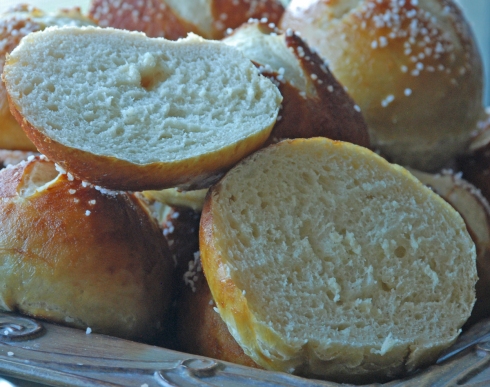
Fennel Fig Bread
This was developed from a list of ingredients lifted from the display case at Arizmendi Bakery, in San Francisco. I consulted a few other similar recipes to help out with proportions. The technique is basically a stretch-and-fold approach I lifted from some Tartine recipe in a magazine.
Levain
- 2 T wheat bran
- 3/4 cup whole wheat flour
- 1 cup water
- 1-2 T active starter ("sufficient" starter to get the levain going)
Set out overnight, or until it is sufficiently developed to float. It's fairly cool here, so 10-12 hours seems to work well for me now.
Dough
- all of the levain
- 1/2 cup warm water
- 2 1/2 cups bread flour ("sufficient" flour to make a fairly wet dough)
- 1 1/2 tsp salt
Mix well, until the dough separates from the bowl stickily, the usual sort of thing. Stretch and fold every half hour or so for about 3 hours, until the dough is getting close to fully devloped (elastic and as smooth as the bran will allow, and starting to get leavened). Mix in:
- 2 T fennel seeds
- 1 tsp fresh ground pepper
- 12 medium sized dried black figs, quartered (take the stems off if there are any!)
You want the dough mostly but not completely developed. You're going to mix in this stuff with some stretch and fold every 15-20 minutes or so, for 2 or 3 turns. So, another 40 minutes to an hour on the bench.
Form up a loaf, bake at 450 for 40 minutes or so. You'll want to bake a few minutes longer than you would normally bake a loaf of this size, for the figs.
The pepper really makes this one. 1 tsp adds a definitely peppery bite, so you may want to start with less if you're not a pepper fan, or if you are worried about big flavors.
























